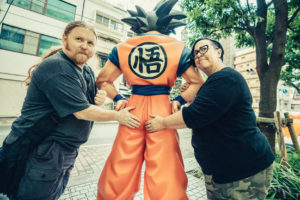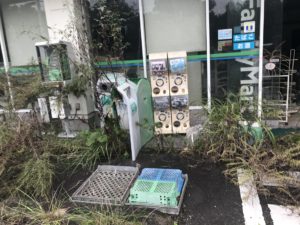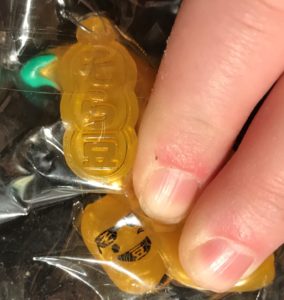First of all, I want to thank everyone that contributed, watched, and bullshitted with us for the Team Sensible Shoes Extra Life campaign, playing Shadows of Brimstone for a bit over 26 hours spread over two days. It was fun, still challenging to our increasingly old bodies, and we hit our fundraising goal. Again, thank you!
Moving on to business, as the BBotE pre-order slots for the window ending November 27th are now up that means we’re sneaking up on Thanksgiving and it’s time to give my PROTIPS for holiday shopping! To the people that are very proactive and organized in their holiday shopping, such as the gentleman that I let place a reserve order in August for shipment on December 18th, I’ll answer your question now: yes, you can place an order now in an earlier production window for a holiday shipment. Just leave a note saying “Delay shipment until $DESIRED_DATE” with your order so I know you want it later rather than ASAP.

The last pre-Xmas BBotE production window will close on December 14th. All things being equal, domestic or international, everything shipped by the 14th should end up at their destination by Christmas Eve. I can’t control weather, volcanic eruptions, asteroid strikes, or unilateral surprise withdrawal from international postal unions that may or may not happen (again), but a week and change is usually quite sufficient to get everything to its destination, even international. I will put another pre-order window up and crank as much out as I can after the 14th, and domestic shipping on Saturday December 21st have a chance to get there by the 24th, but I make absolutely no guarantees about shipments in that window arriving in time. Express mail gets more and more necessary in the last days. I’ll do my best, but that’s all I can do.
To reiterate shopping advice from the previous years, here’s a few things you should probably think about if you decide to place an order for a holiday gift from Funranium Labs:
- Steins of Science Availability is Limited: As mentioned in the previous Twilight of the Steins post a few years ago, I lost my relatively cheap supply line for dewars. I am maintaining some inventory, but not many. If you really, really want one and the one you want is not available, contact me sooner rather than later so I can do my best to get one for you ASAP.
- BBotE Is Perishable: When refrigerated, it has a shelf-life of about three months (possibly longer, but I’m only going to quote three). If you’re going to wrap it up and put it under the tree, this a present to put out on Christmas Eve and the promptly put back in the fridge after unwrapping. Alternatively, embrace the idea of the holiday season and decide that give it to the recipient immediately, for all days are special.
- Let People Know BBotE Is Coming: I know part of the joy in presents is the surprise of what you get. However, joy is not the emotion most people feel when a bottle of mysterious black liquid shows up on their doorstep, especially if it’s been sitting there for a week outside because they were out of town. Give them a heads up, that something’s coming they’ll want to stick in the fridge. I will also tuck handling instructions in the box for a gift and a note stating who sent it.
- The pre-order slot dates date are “Ship No Later Than”, not “Ships After”: I get your orders out as soon as I can, but even in the furthest flung corner of the US with the slowest mail carrier, this means you should have your order in hand by December 18th for that last set of late order slots. If you want to order something NOW to ship later, effectively reserving a spot in a later order queue, you can do so but please leave a note with your order telling me when you want it to ship by.
- International Shipments Go Out Express Mail: Because I don’t want BBotE to get stuck in postal facilities or customs, express is the only way to ship to minimize their time in bureaucratic hell. Expect it to take 3-5 business days to get to you, so time your orders accordingly to make sure things get to you in time.
- APO/FPO: If you wish to send something out to someone with an Armed Forces address, there’s good news and bad news. Good news – it’s no more expensive than priority mail. Bad news – I can’t guarantee any date as to when things will arrive. Outside of active war zones, things move somewhat normally; inside war zones and on ships at sea, things get iffy. Also, depending on routing, some nations (I’m looking at you, Turkey) have bounced BBotE back to me on the basis that it is, and I quote, “Morally Questionable Material”. Amazingly, my shipments to Korea and Okinawa seem to arrive faster than they do to other places on the west coast of the US mainland. Go figure. In short, I’ll do my best but you’ve been warned.
- Local Pick Up: Resupply shipments will go out to all the BBotE Ambassadors as fast as I can crank them out, so be sure to drop them a line if grabbing a bottle that way is more convenient for you. A message to them will help them decide what to fill their cases with. I’m sure they’d like clean and empty refrigerators as their Christmas present.
- Turkey, Italy & Brazil: It breaks my heart to say this, I can’t ship to these countries. Italy, I absolutely do not trust your postal system. The level of theft shipping things anywhere south of Rome is, frankly, appalling. If you ask me to ship to Naples, I make absolutely zero guarantee of it arriving. Brazil, your customs causes shipments to languish for so long that the BBotE goes off before it arrives, even if shipped express; steins seem to be fine though. Turkey, well, I discussed that problems in #5.
- BBotE Production Is First Come, First Served: My maximum daily production output is 12L per day. Thus, people who request 12pk cases will lock up production for an entire day.
- BBotE Has No Kosher Or Halal Certification: While Robert Anton Wilson did confer the papacy upon me, and all the other people in the Porter College Dining Hall at UCSC in 1996, this does not permit me to sanctify food. I do have a helpful Dominican priest in Portland who’d probably be willing to bless BBotE for you, but that’s still not helpful. Sorry.
For those of you who read this far, I congratulate you.











